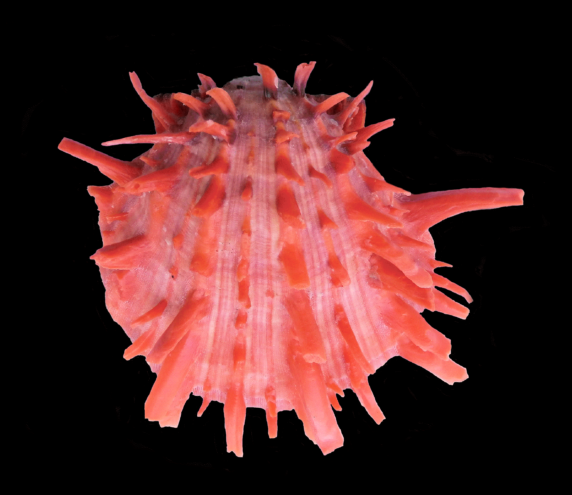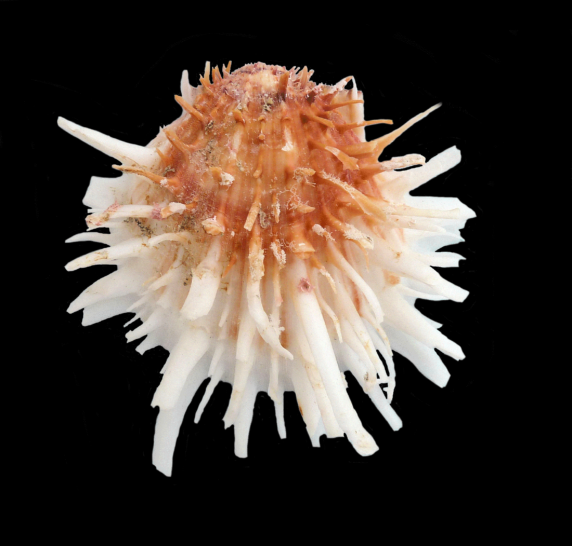Spiny Oysters in the Spondylidae Family of Spiny Oysters are bivalve mollusks that are also known as Thorny Oysters that have very attractive circular shells. Both values of the shells are convex and their right valve attaches to hard substrate and the left valve is heavily ribbed or spiny. They are closely related to scallops. Like scallops they have a row of eyes along their mantle that allow the detection of light and dark. These oysters have less noticeable auricles than scallops and a ball and socket type hinge instead of the interlocking teeth found in other bivalves. Spiny Oysters are suspension feeders, filtering plankton and fine detritus from the water. In turn they are preyed upon by murex snails and sea stars. They are found in global warm oceans at a wide variety of depths. Deeper water species tend to have more delicate spines because they are less exposed to turbulence.
There are fifty-two species in the Spondylidae Family of which four are found along the coastlines of the Baja Peninsula. Spiny Oysters date to the Mesozoic Era (252 to 66 million years ago) and are a common component of archaeological excavations in South and Central America, Mexico, and the American Southwest. Spiny Oysters are edible and are commercially fished and farmed. They have also been used as burial goods, fertility symbols, jewelry, burial goods, religious symbols and as trade items.


